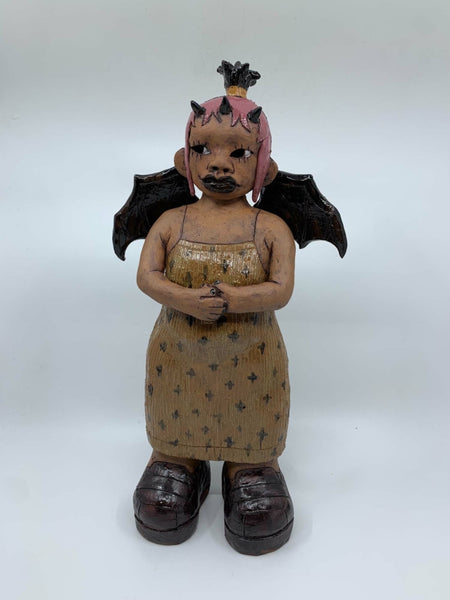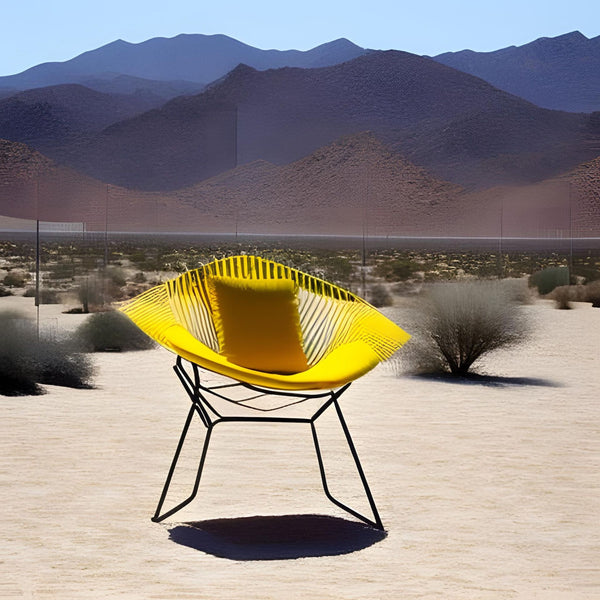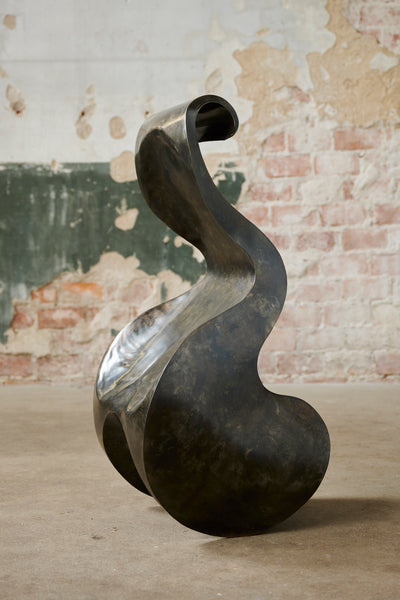How to Make It
Social Seating
NYC artist Luam Melake’s functional furniture inspires human connection
In her Harlem apartment where she both lives and works, artist Luam Melake demonstrates how to sit on one of her latest pieces, literally titled Supportive Chair. It is shiny with sharp edges, as if made from glazed ceramic. But on closer inspection, the surface is pleasingly squishy, constructed from upholstery foam cut into geometric forms and coated with a thin layer of industrial urethane. Translucent dyes cover the exterior.

Supportive Chair was inspired by mothers that Melake had read about during the pandemic. “A chair fixes you in one position,’” she says. “I was like, ‘How do I make a chair for when your home is a really stressful place?’” She arches and leans her head all the way back so that it comfortably rests against the top of the chair. “It’s designed for you to do this because it stretches your spine like the cow position in yoga, and it actually activates your parasympathetic nervous system to calm you down.”
The seat extends on both sides like a shelf, allowing the sitter to cradle another person with one arm. “It feels like you’re embracing,” she says. “If you are a mother with kids, then you can sit with children on either side of you. When two people are sitting down [i.e., on a couch], you can’t really embrace each other. You have to stand up, sit back down.”

Unveiled in her recent solo exhibition at R & Company in New York, Supportive Chair is part of Melake’s Furnishing Feelings series, aimed at encouraging interaction, eye contact, and physical intimacy. “It’s about the American experience of socializing, the digital era that we’re living in, and how we’re alienating ourselves from our bodies and from each other,” she says. “It’s furniture that people should engage with to get back to being human.”
Melake, who specializes in both functional furniture and handwoven sculpture, has long been interested in the social impact of art. She studied architecture and art history at the University of California, Berkeley, in the 2000s, but her art education began much earlier. “When I was a kid, I was always at the public library learning about different things,” she says. “I knew so much about fashion, cars, random stuff—just because I was curious.” One by one, she weeded possible career paths out; car design was too technical, the fashion industry was off- putting. In high school, she took community college art classes and found she had talent in photorealistic painting but didn’t identify with its two-dimensional quality.

“I couldn’t figure out how I could connect painting to life without just being representational,” says Melake, who grew up in San Diego. “I’m just not connected to it like with my textile work or other sculptures made of materials from the built environment. We have associations of those materials because they are part of our life. It connects back to how we live.”
Melake also leads a team of researchers at the Parsons School of Design Healthy Materials Lab, sourcing better alternatives for standard materials—ones that have low toxicity and are good for the climate crisis. Naturally, if you look around her apartment, you’ll find pieces she has created from unique mediums, including recycled aluminum that has been injected with gasses to make it porous and light.

Furnishing Feelings reflects Melake’s desire for her work to be rooted in reality. “It’s not lost in the world of poetics,” she says. “I definitely think about people’s homes and try to scale my work for that.” She even created a catalog and stop-motion video as how-to guides for activating each piece. “The pieces themselves don’t necessarily tell you how to use them. Part of that is deliberate because I want there to be some kind of play. And when the pieces are all together, it becomes a playground.”
One of her favorite pieces of furniture in her apartment is an Ikea sofa that easily folds out into a bed and stores all her linens as well. “I love this couch,” she says. “If Ikea tapped me to do something for them, I would be so happy. I would do this kind of furniture except upholstered, flexible things that can come apart or something like that. Wouldn’t that be fun?” ◆
This story is excerpted from Social Seating written by Claudine Ko for Design District Magazine, Issue 1, 2023.



